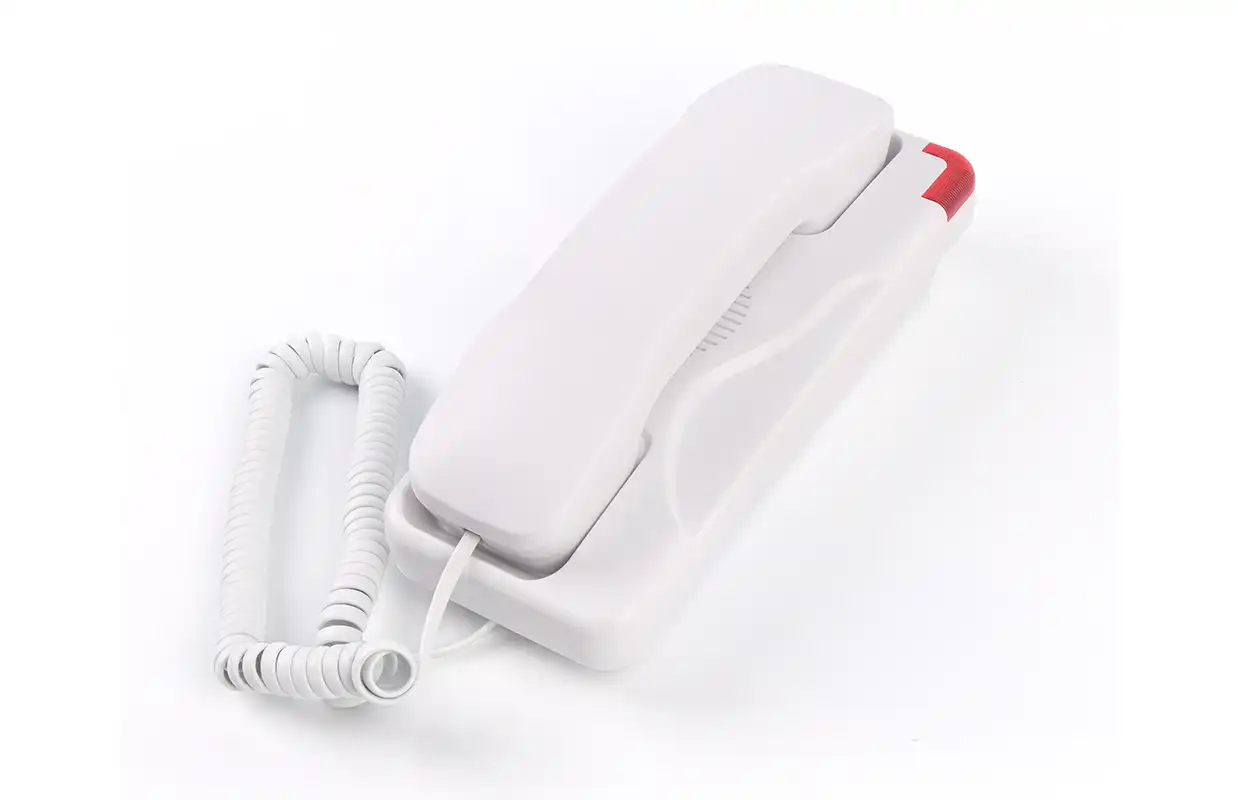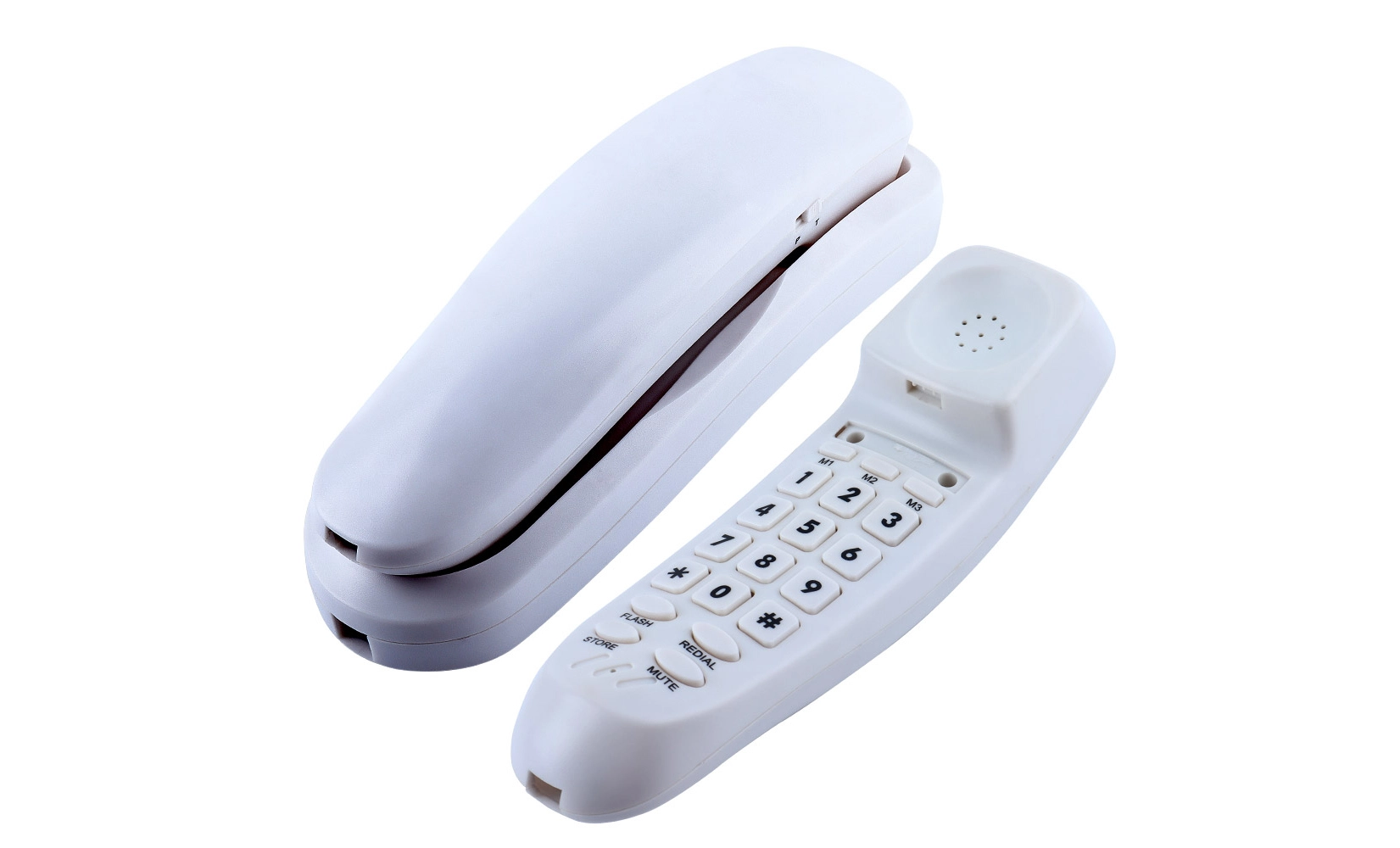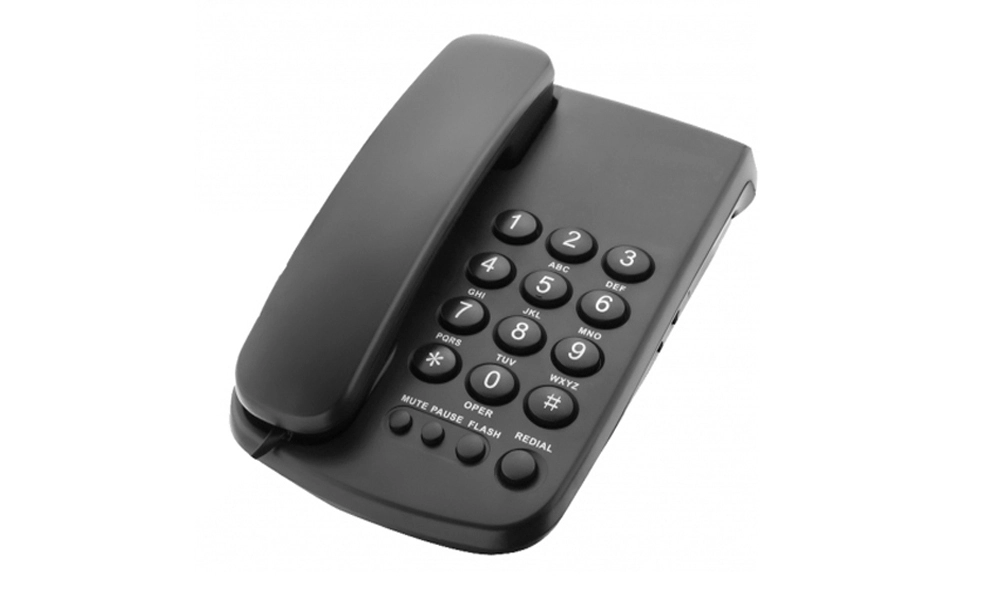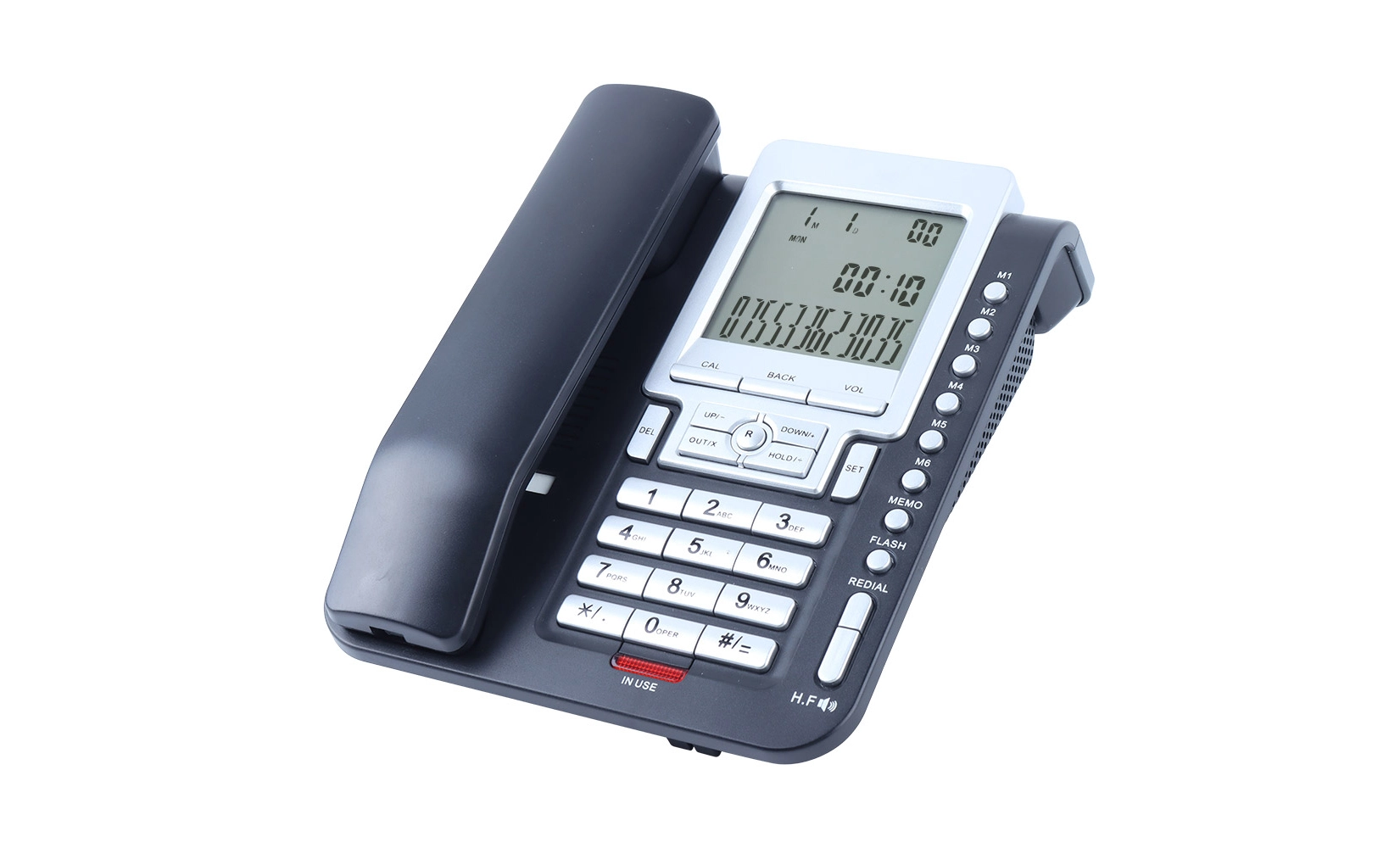Space Efficiency: Maximizing Workspace with Trimline Telephones
Compact Design of Trimline Phones
Trimline telephones revolutionized the telecommunications industry with their cutting-edge, space-saving design. Standard desk phones are big and clunky, but trimline phones have a slim appearance and make the dial pad part of the handset. This clever configuration shrinks the phone down a lot, so it's a good pick for areas with little space.
Trimline phones can be put in a lot of different places because they are small. They can be put on walls to save space on desks or counters, or they can be set on small tables next to the wall so they don't take up too much space. Trimline telephones are ideal for small spaces such as hospital bedside tables, hotel rooms, and small office cubicles due to their flexibility.
Space Requirements of Traditional Desk Phones
Regular desk phones, however, take up more room because the base and handset are separate. The base usually has extra features like small screens or buttons that can be set. It's where the speaker and dial pad are located. While this layout can be helpful for some things, it naturally uses more space on a desk or work area.
These days, space is valuable, so the bigger size of standard desk phones can be an issue. As open plans and hot-desking become more common in offices, the need for small gadgets that people can use to talk to each other is rising. In these situations, the larger vintage desk phone might make it harder to move between areas and make the desks look unorganized.
Impact on Workspace Organization
The space-saving features of Trimline telephones greatly facilitate better desk organization. People can maximize their space or maintain a neat and tidy appearance by minimizing the phone's real presence. It's good to look neat and efficient with this feature in places where customers can see it, like a store counter or a hotel welcome desk.
Also, Trimline phones are smaller, which goes along with the current trend in interior design toward making things simple. Because of their smooth shape, they don't stand out and go with modern decor. This makes them easy to fit in with different settings. Because they combine these benefits with useful space-saving features, Trimline telephones are an excellent choice for people and businesses who care about how things look and function.
Ergonomic Considerations: User Comfort and Efficiency
Ergonomic Design of Trimline Telephones
Trimline telephones are renowned for their practical design, which prioritizes user comfort and productivity. Adding the dial pad to the handset makes the unit more efficient, and it fits the user's hand easily. You can hold the phone with one hand using this setup. This helps with using the phone for a long time or when you're doing something else at the same time.
On Trimline phones, there are many things to think about when it comes to where the buttons are so that people can easily access the features they use often. You don't have to move your hand around a lot to get to the settings because the device is small. This useful perk can help people who are on the phone a lot, like customer service reps or receptionists.
Ergonomics of Traditional Desk Phones
Desk phones with more features may be easier to use, but desk phones may be harder on the body. The handset and base unit are not connected, so people have to use two separate parts during a call. This can make your arms move more, and it might even be uncomfortable during long talks.
But regular work phones are better for your hands in some ways. People with visual or motor impairments may find it easier to read and use the bigger buttons and screens. Also, many models have a speakerphone feature, so you can use it without having to hold it, which can be more comfortable for long calls or conferences.
 Long-term User Comfort and Health Implications
Long-term User Comfort and Health Implications
The ergonomic form of Trimline telephones may help to reduce strain and fatigue when used for an extended period of time. Being able to hold the phone and use it with one hand may lower the risk of injuries from doing the same thing over and over again that are linked to long phone use. This feature is especially important for jobs where you have to be on the phone a lot.
On the other hand, traditional desk phones, especially more modern models, often incorporate adjustable displays and tilting bases. These features let people change the phone's position to the angle they want to see it from, which might help keep their neck from hurting while they use it. In the end, whether to use a Trimline or a standard desk phone may depend on the user's needs and how they plan to use the phone.
Versatility and Functionality: Meeting Diverse Communication Needs
Adaptability of Trimline Telephones
Trimline telephones are great because they can be used in a lot of different places and for a lot of different people. Their small size makes it easy to switch between wall-mounted and desk-based setups. This ability to adapt is especially useful in places where the needs may change often, like in hotels or healthcare settings.
A lot of today's Trimline models have new functions but still look slim. These may have caller ID, programmable speed dial buttons, or even simple conferencing features. Trimline phones have evolved to meet modern contact needs while still offering space-saving benefits, as seen in the integration of these functions into a small device.
Feature Set of Traditional Desk Phones
Desk phones that are more modern usually have a bigger selection of features and functions. Advanced models might have big, touchable screens, lots of buttons that can be programmed, and fancy video call features. These features can be very helpful in offices where call handling and managing multiple lines at the same time are necessary.
Traditional desk phones are better for hands-free calls and conference calls because their bigger size makes room for better speakerphone systems and extra microphones. Some models also work with computer systems or VoIP networks, connecting old and new phone and digital communication systems.
Meeting Diverse User Needs
People or businesses often have to choose between Trimline and traditional desk phones based on their individual needs. Trimline phones are great for places where there isn't much space, like small offices, hotel rooms, or healthcare settings. Because they are simple and easy to use, they are great for places with high turnover or where teaching users isn't possible.
In business settings or call centers where advanced call handling is important, traditional desk phones with more features are often the chosen choice. They can handle complicated phone systems and work with other office technologies, so they're a good choice for businesses with different communication needs.
In the end, if you want to use Trimline or regular desk phones should be based on a careful study of how they will be used, how much space there is, and what features are needed. Both kinds of phones are still changing, as companies add new technologies to make them more useful and take into account each design's special benefits.
Conclusion
It is evident from contrasting Trimline telephones with conventional desk phones that each has its advantages and disadvantages. Trimline phones are great at saving room, being comfortable for long periods of time, and working well in different environments. Their small size means they can be used in places where room is limited or where a clean look is wanted.
Traditional desk phones are bigger, but they have more features and usually work with more complicated phone systems. They're a good fit for offices where advanced call handling and integration with other communication technologies are important.
The choice between the two ultimately depends on the specific needs of the user or organization. Things like available space, how often and how long it will be used, what features it needs, and the general communication environment should be thought about. As technology keeps changing, both Trimline and standard desk phones will probably get new features and abilities. This will make it even harder to tell these two classic phone types apart.
Compact, durable phones with modern wiring options | CHEETA
CHEETA makes a lot of different kinds of modern, small, and durable analog phones with new wiring choices. Our factory can make 1,000 units a day and guarantees quick shipping and the ability to customize products because we have more than 18 years of OEM/ODM experience. Less than 1% of our goods fail because they are carefully checked for quality. The stylish and useful usefulness of CHEETA phones makes them perfect for settings from hotel rooms to offices. We put user needs first by always making changes based on comments and case studies from around the world. If you have questions about our phone goods, please email us at allen@cheeta.com.cn.







